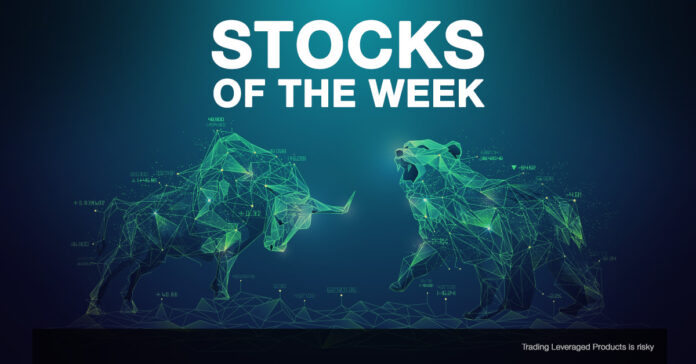Last week, the annual US inflation rate in April was reported slightly down, at 8.3%, from a 41-year high of 8.5%. On the other hand, despite rising prices, personal spending in the US was up 0.9% (m/m), beating consensus forecasts of 0.7%, while the previous value in March was revised upward to 1.4%. Changes in prices post adjustment also revealed that purchases of goods and services increased 0.7%, higher than the 0.5% recorded in the previous month.
Signs of slowing inflation (though it is unlikely to hit pre-pandemic levels within a short period), and spending activities that remained robust, have helped in easing worries over a sharp economic slowdown. In general, all the major S&P sectors remained positive. Among them, the share price of the world’s largest coffeehouse chain, Starbucks, which is committed to being the premier roaster and retailer of specialty coffee, closed higher at $76.59 on Friday, up 9.63% from the lows seen on 12th May.
In its latest earnings report, Starbucks reported global comparable store sales increased 7%, resulting in consolidated net revenues up 15% to $7.6 billion. Non-GAAP earnings per share (EPS) were slightly down 3.39% from the same period last year to $0.59, affected by inflationary pressures and the China lockdown as well as investments in retail store partner wages and benefits. Nevertheless, the outlook remains positive as active membership in the US to their loyalty program has increased 17% (y/y) to 26.7 million.
Starbucks maintains its competitive advantage through product differentiation, strong market positioning, comfortable ambience, excellent quality control and customer service, geographically strategic locations, constant innovation on drinks and food items catering to customer preferences as well as usage of technology (mobile apps) to connect with customers. These factors have helped the company gain new customers worldwide as well as build a solid loyal customer base.
Starbucks may dominate the US market but this may not be the case globally. The entry of new local beverage brands in China has posed a threat to the US coffee conglomerate, and in addition, other foreign brands such as Costa Coffee that already have a strong loyal following may also reduce the potential market share of Starbucks. Other indirect competitors include fast food chains and brands who provide substitutions to coffee such as tea, fruit juice, flavored water, etc. As such, it is equally essential that Starbucks develops a diverse mix of product offerings to capture locals’ attention outside of the US as it is for the company to maintain its emphasis on its customer-orientated culture. Effective measures should help to expand the international market, and at the same time solve the issue of an over-saturation of stores in the US Recently, the company announced that it will exit Russia with 130 licensed coffee chains closed in the country, which accounts for less than 1% of its annual revenue.
Technical point of view:
Technically, the weekly chart shows the #Starbucks share price closed higher last week, up 12% from the low point seen earlier this month. In general, the company share price remains at the low estimates of analysts, $76.00 The OsMA indicator shows a contracting bearish histogram, with RSI at the oversold area while Stochastics approach 50. Validating the signals released by the indicators requires a strong bullish breakout above resistance $79.15 (or FR 61.8% extended from the lows seen in March 2020 to the highs in July last year). The next resistance will be $88.16 (FR 50.0%) and $97.16 (FR 38.2%, or the 100-week SMA). Otherwise, if selling pressure persists, the #Starbucks share price should test support at $66.33, followed by the lows seen in March 2020, at $50.00.
Click here to access our Economic Calendar
Larince Zhang
Market Analyst – HF Educational Office – Malaysia
Disclaimer: This material is provided as a general marketing communication for information purposes only and does not constitute an independent investment research. Nothing in this communication contains, or should be considered as containing, an investment advice or an investment recommendation or a solicitation for the purpose of buying or selling of any financial instrument. All information provided is gathered from reputable sources and any information containing an indication of past performance is not a guarantee or reliable indicator of future performance. Users acknowledge that any investment in Leveraged Products is characterized by a certain degree of uncertainty and that any investment of this nature involves a high level of risk for which the users are solely responsible and liable. We assume no liability for any loss arising from any investment made based on the information provided in this communication. This communication must not be reproduced or further distribution.




















